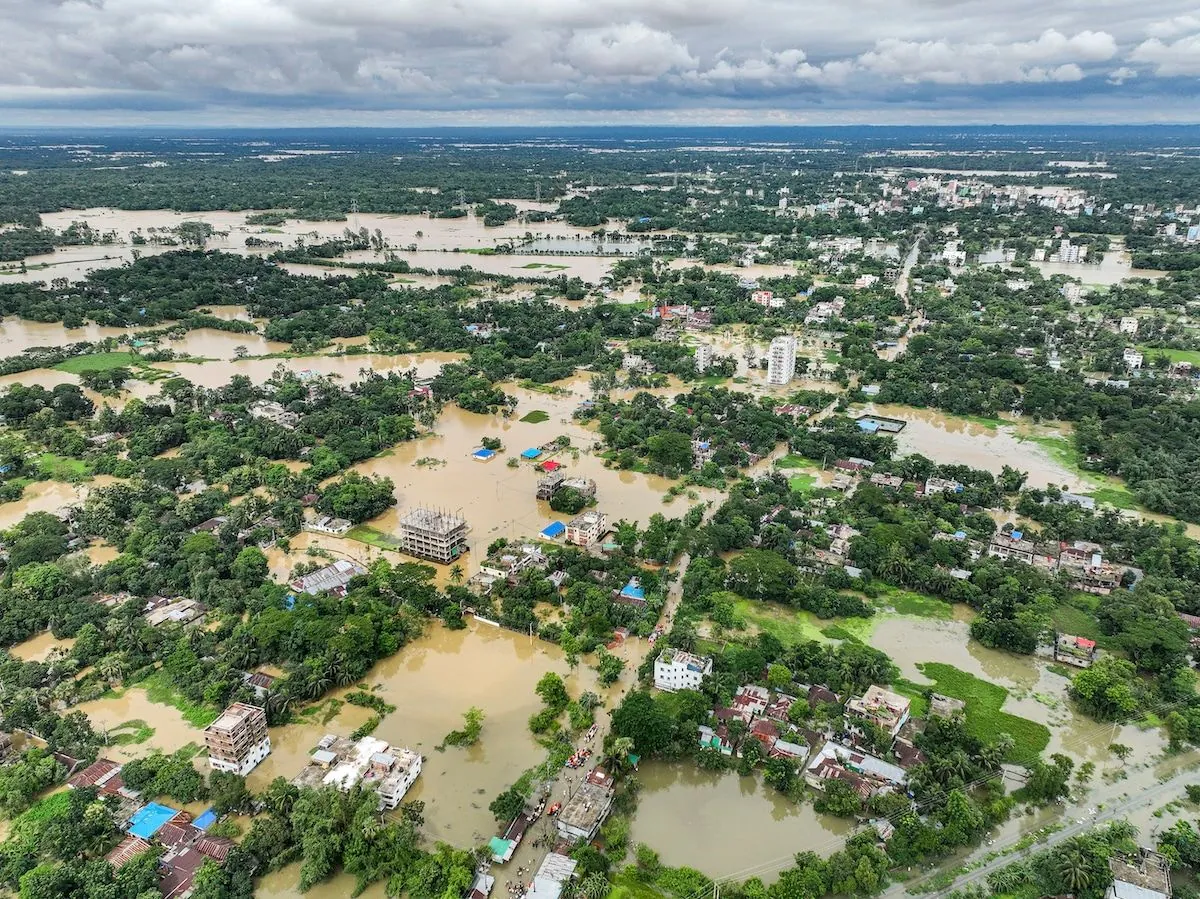In a devastating turn of events, northern Bangladesh is grappling with severe flooding that has claimed at least five lives and left more than 100,000 people stranded. The disaster, triggered by heavy rainfall and upstream torrents, has particularly affected the Sherpur district, submerging homes, roads, and vast agricultural lands.
Abu Taher, a resident of Sherpur, expressed his shock at the unprecedented scale of the flooding, stating, "I have never seen such flooding in my life." This sentiment echoes the growing concern about the increasing frequency and severity of such events in Bangladesh, a country known for its vulnerability to climate change impacts.
Bangladesh, the world's eighth most populous nation with over 170 million inhabitants, is situated in the Ganges-Brahmaputra Delta, the largest river delta system globally. This geographical feature, combined with its low-lying terrain and over 700 rivers, makes the country particularly susceptible to flooding. The current disaster underscores the challenges faced by this densely populated nation, which experiences monsoon seasons from June to October annually.
The army has been deployed to assist in rescue operations, utilizing boats and helicopters to evacuate stranded residents and deliver essential supplies. However, the collapse of bridges and submerged roads have complicated these efforts. Torofdar Mahmudur Rahman, the Sherpur district administrator, emphasized the priority of evacuating people to safe shelters and providing them with necessary aid.
Agricultural concerns loom large as floodwaters threaten vast areas of cropland, particularly rice fields. Rice, occupying about 75% of Bangladesh's cropland, is the country's primary crop and a crucial component of its economy. The potential devastation of these crops could have severe long-term economic consequences for farmers and the nation as a whole.
This flooding event is not isolated. In August 2024, eastern Bangladesh experienced floods that resulted in over 70 fatalities and caused an estimated $1.20 billion in damages, according to a study by the Centre for Policy Dialogue. These recurring disasters highlight Bangladesh's ongoing struggle with climate-related challenges.
A 2015 World Bank Institute analysis estimated that 3.5 million people in Bangladesh are at risk of annual river flooding, a figure that scientists warn is likely to increase due to global climate change. This risk is compounded by Bangladesh's unique geography, with its lowest point at sea level and highest at 1,064 meters, creating a landscape prone to inundation.
The country's vulnerability extends beyond flooding. Bangladesh faces an average of 1-3 cyclones annually and grapples with issues such as arsenic contamination in groundwater. Despite these challenges, the nation has made significant strides in economic development and poverty reduction since the 1990s, with a rapidly growing economy focused on industries such as garment manufacturing.
As the situation unfolds, weather forecasts predicting more rain in the coming days have raised fears of further inundation. In response to the ongoing crisis, the United Nations and its partners have launched a $134 million humanitarian appeal to provide urgent relief and support to communities affected by floods and cyclones in Bangladesh.
The current flooding crisis serves as a stark reminder of the urgent need for global action on climate change and the importance of supporting vulnerable nations in their efforts to adapt and build resilience against increasingly frequent and severe weather events.
